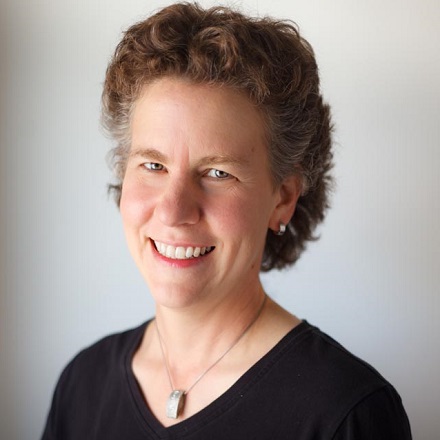
In the News
Swamp Coolers Pump Smoke into Homes During Wildfires. In the Central Valley, Researchers and the Community Work on a Solution
- KVPR- Valley Public Radio
-
Focus Areas
Environmental Health, Healthy Communities -
Issues
Wildfires & Extreme Heat -
Expertise
Research – Quantitative, Research – Surveillance

This article was written by Esther Quintanilla, who reports on diverse communities for KVPR through the Central Valley News Collaborative.
“COALINGA, Calif. – Jose Gomez remembers the day the Mineral Fire scorched the land near his hometown of Coalinga in 2020. He remembers the sun hidden behind hazy clouds, the dry heat seeping into his home and a looming feeling of dread.
“It felt like one of those gloomy days, when you’re expecting rain,” Gomez says. “But it was nothing but ashes.”
Gomez lives with his elderly mother in a mobile home park in the outskirts of the city in western Fresno County. At the peak of the wildfire, he says there was no way to escape the smoky air, even inside his home with the swamp cooler blowing.
“It was hard to breathe,” Gomez says. “It felt like weight in [my] chest.”
The brutal wildfire grew to nearly 30,000 acres over the span of two weeks, causing hundreds of rural residents to seek shelter indoors. Many people only have swamp coolers, rather than air conditioning units, inside their homes, and that meant the health effects of wildfire smoke were unavoidable.
Gomez and his neighbors faced an impossible choice. If they turned on their swamp coolers, it would blow the smoky air into their homes, exposing them to harmful pollutants like carbon monoxide, sulfuric acid, pollen and dust particles. But if they left their coolers turned off, they would have to suffer with sweltering temperatures indoors.
“The reality of the fact is that these swamp coolers do not have adequate filtration systems,” says Ruben Rodriguez, a community organizer with the Central California Environmental Justice Network. “So one way or another, they’re breathing in particulate pollution.”
That’s why Gomez, his neighbors and others in western stretch of the San Joaquin Valley who rely on swamp coolers are partnering with researchers to find a way to improve their indoor air quality.
Researchers test new air filtration systems in mobile homes
Swamp coolers work by drawing in warm, dry air from the outside through water-soaked cooling pads and blowing the damp air into the home. Most of the time, they’re less expensive and more energy efficient than air conditioning.
But according to Rodriguez and various environmental agencies, the coolers don’t sufficiently filter air in high pollution areas like the Valley – especially during wildfires. Breathing that smoke can cause asthma, heart disease and other health conditions.
“Unfortunately, a lot of these folks understand that they were pumping smoke into their house during the wildfire season, but they didn’t understand the dangers of breathing in that particulate pollution,” Rodriguez says.
But Gomez and his neighbors felt the danger. They asked Rodriguez if there were filtration attachments they could add to their coolers. But when they didn’t find anything on the market, they turned to researchers at the Oakland-based Public Health Institute for a solution.
Now, more than a dozen families from the mobile home park are volunteers in a new project called the Filtration for Respiratory Exposures from Swamp Cooler Air, or FRESSCA for short.
The project is funded by the Environmental Protection Agency, and aims to design, test and develop an air filtration system.
Since 2020, lead investigator Gina Soloman and her team of researchers have been collecting data inside the mobile homes in the cities of Coalinga, Avenal, Huron and Kettleman City.
They recently developed a prototype model of a filtration system and visited homes to install them earlier this summer.
“We’re trying to basically balance out making sure they get [a] good flow of cool air into the home, but at the same time getting the best particle filtration that we can get,” Solomon says.
In order to achieve that, they wrapped thin, carbon-lined Merv 13 filters onto the coolers. Soloman says these particular filters are effective at catching the smallest pollutants found in wildfire smoke.

[The particles] are not ones we feel when we breathe them in, but they get all the way down right to where the oxygen exchanges with our blood. That's where the problem is. And they cause a lot of inflammation down there and long term harm.Gina Solomon, MD, MPH
Former director of PHI’s Achieving Resilient Communities (ARC) and PHI’s Science for Toxic Exposure Prevention
New air filters appear to reduce particle pollution in homes
According to Soloman, the filters show promising results. The initial readings show a more than 50% decrease in particle pollution after installation.
But the filters need to be replaced every few months. In the event of a wildfire, they would need to be replaced even more frequently, which can be expensive.
Each replacement filter can cost up to $100 depending on the size of the swamp cooler. In the next phase of the study, researchers are hoping to bring that cost down.
Until then, Jose Gomez says he can rest easy knowing he can breathe in cleaner air.
“It feels good to have the air on,” Gomez says. “When I come home, it’s fresh. Fresh for me and fresh for my mom.”
The FRESSCA project is expected to have its final results later this year.”
This story is part of the Central Valley News Collaborative, which is supported by the Central Valley Community Foundation with technology and training support by Microsoft Corp.
To read the full article, click on the direct link below.
Related Articles
Swamp coolers pump smoke into homes during wildfires. Experts see a solution in the Central Valley / KVPR – Valley Public Radio
Finding new solutions to addressing poor indoor air quality, wildfire smoke in hardest hit communities / KQED – The California Report (Listen in at the 2:54 mark)
Originally published by KVPR - Valley Public Radio
More Updates
Work With Us
You change the world. We do the rest. Explore fiscal sponsorship at PHI.
Support Us
Together, we can accelerate our response to public health’s most critical issues.
Find Employment
Begin your career at the Public Health Institute.



